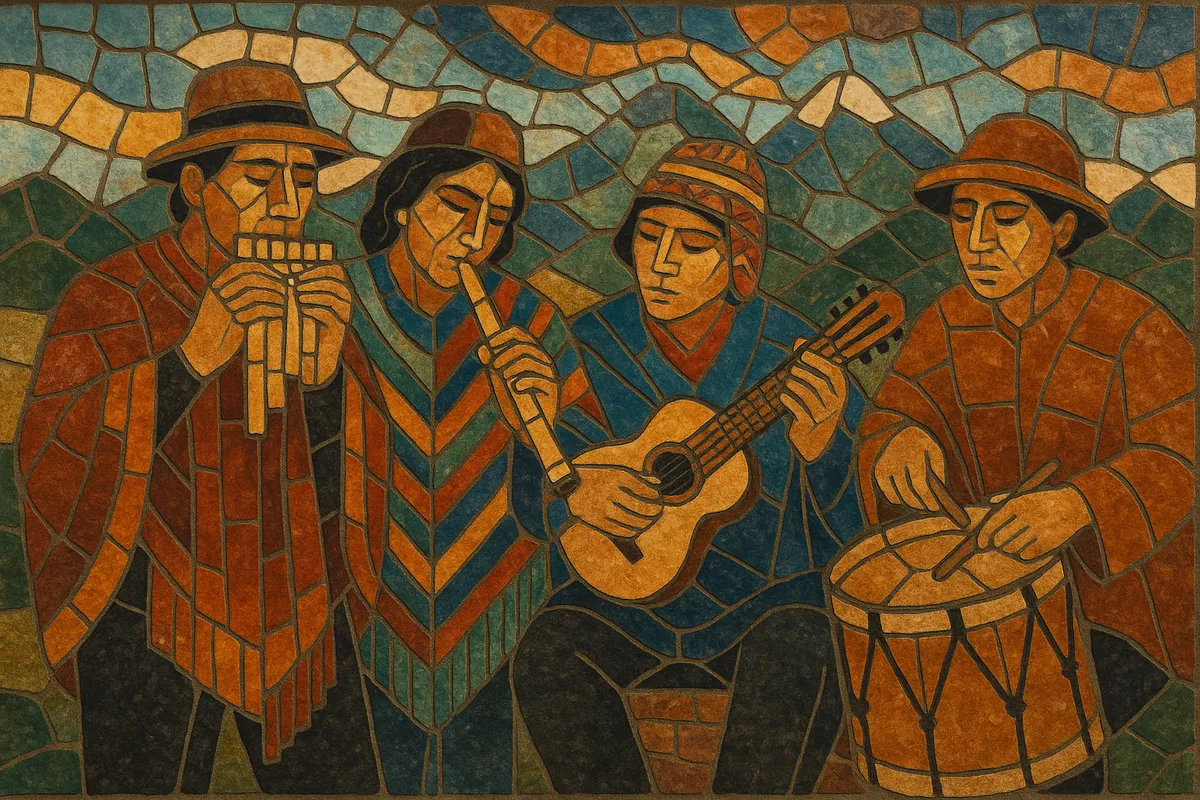Conjunto andino refers to the modern Andean folk ensemble format that crystallized in urban centers of the Central Andes during the 1960s and 1970s. Typical groups feature panpipes (zampoña/siku), end-blown flutes (quena), the small re-entrant lute charango, nylon- or steel-string guitar, bombo legüero or caja (drums), and occasional instruments like kena kena, ronroco, bandurria, and Andean harp.
While rooted in Indigenous Quechua and Aymara musical traditions such as huayno, carnavalito, and sikuri panpipe music, the conjunto format standardized arrangements for stage performance and recording, blending rural repertories with urban harmony and song structures. The result is a recognizable acoustic sound marked by interlocking panpipe lines, bright charango strums, modal/pentatonic melodies, and dance-oriented rhythms.
The modern conjunto andino coalesced in Bolivia in the 1960s around peñas (folk venues) and university circles that foregrounded Indigenous repertories on urban stages. Groups such as Los Jairas helped codify an ensemble format—quena, zampoña, charango, guitar, bombo—that could present huaynos, carnavalitos, cuecas, and sikuri-derived panpipe pieces to broader audiences. Parallel developments in Peru and Chile (often intersecting with the Nueva Canción movement) amplified the sound across the Southern Cone and beyond.
By the 1970s, ensembles like Savia Andina and Los Kjarkas refined arrangement practices: tightly voiced panpipe choirs, antiphonal ira/arka interlocking, rich charango rasgueos and arpeggios, and melodic vocals in Spanish, Quechua, or Aymara. Touring and LP releases built an international audience, while diaspora groups in Europe helped globalize the style. The repertory broadened to include Afro-Bolivian saya, Andean cueca, taquirari, and stylized instrumental suites.
From the 1990s onward, conjunto andino elements permeated worldbeat, folktronica, and Latin alternative scenes. Some ensembles adopted larger stage productions or integrated orchestral and rock instrumentation; others doubled down on acoustic traditions and community panpipe collectives. Today, conjunto andino remains both a heritage-rooted practice in the Andes and a globally recognized ensemble language for Andean identity and cross-cultural collaboration.


